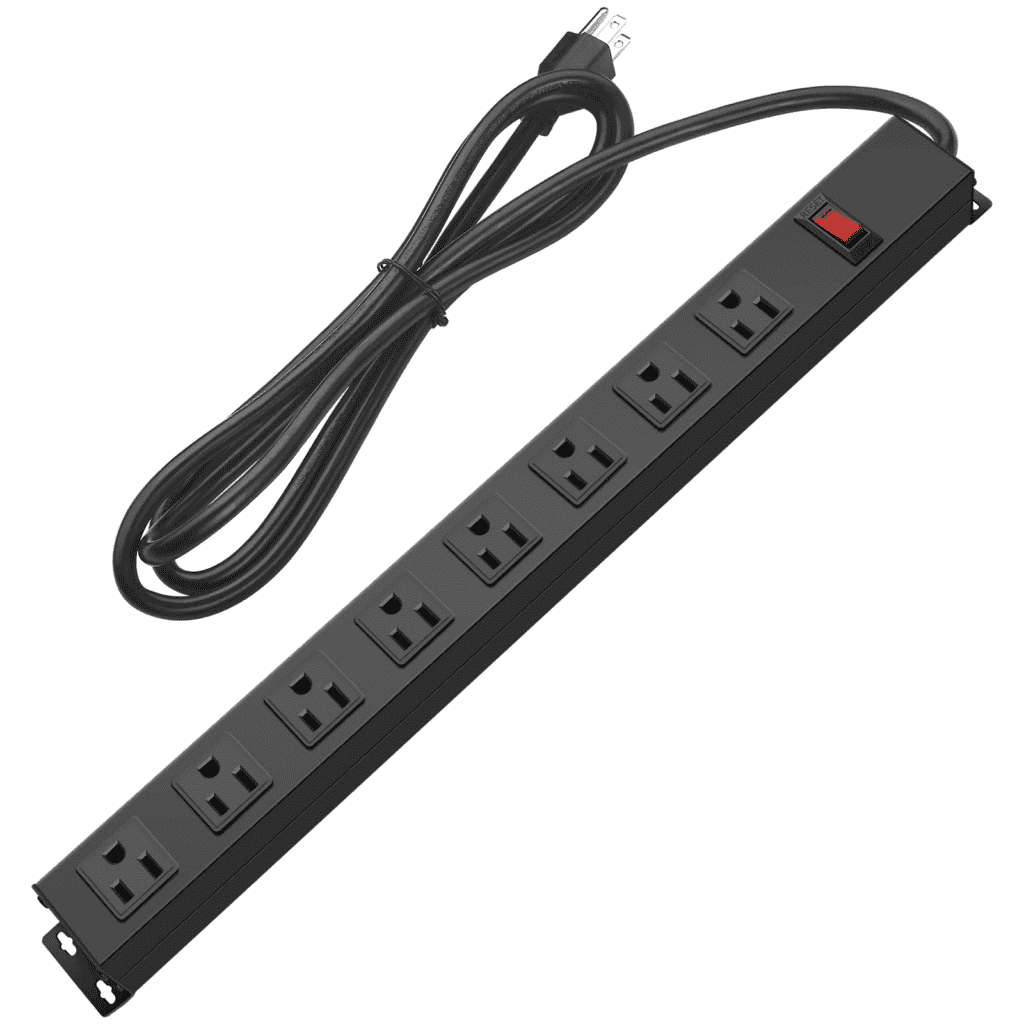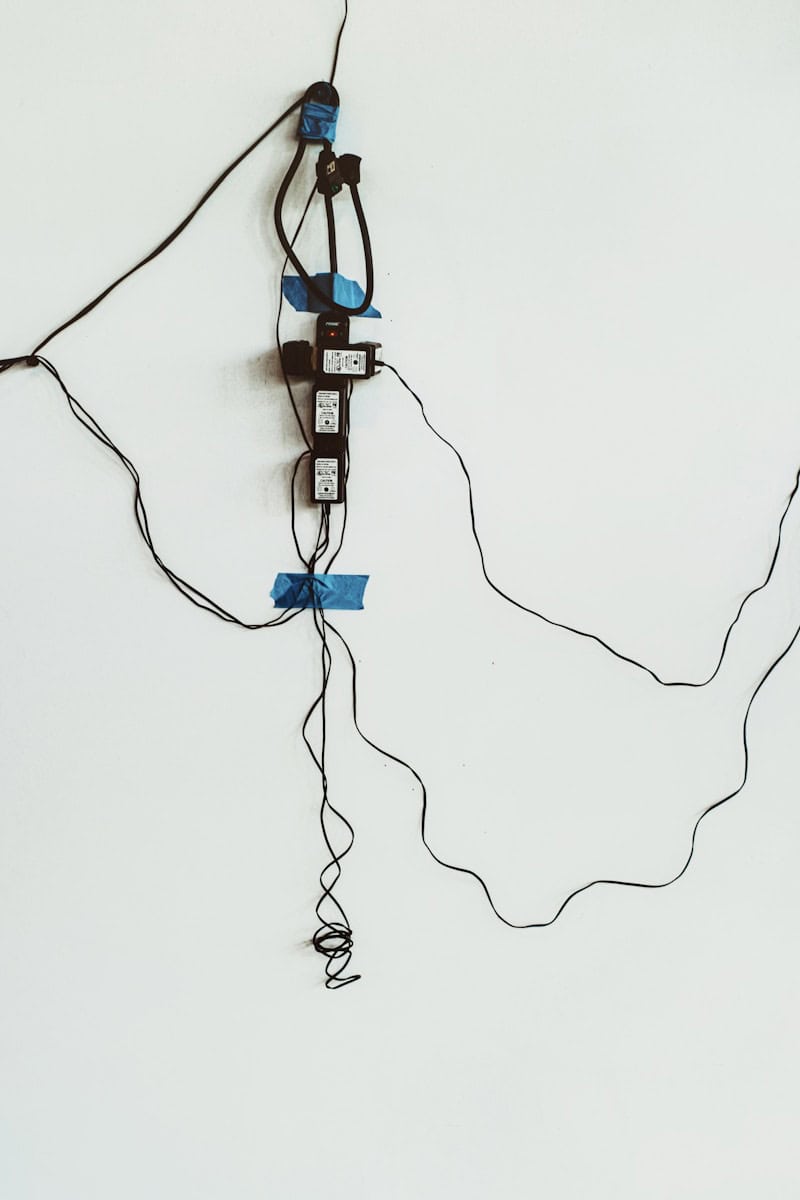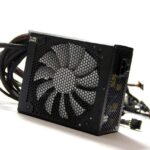A power strip (aka Surge Protector) is a handy device that lets you connect multiple electrical devices to a single outlet. It consists of a block of sockets that extends the reach of your power outlet through a flexible cable. This means you can plug in several devices like your computer, TV, and phone charger all at once.
Besides giving you more outlets, some power strips also come with surge protection. This helps protect your expensive electronics from power spikes. Without this feature, a power strip is just an extension cord with extra sockets.
Not all power strips offer the same level of protection. It’s important to know the difference between a basic power strip and one with surge protection. Make sure to check the packaging or look for a light indicator on the strip to ensure your devices are safe.

Key Takeaways
- A power strip allows multiple devices to connect to one outlet.
- Some power strips include surge protection to guard electronics.
- Check for surge protection features to ensure device safety.
Understanding Power Strips and Surge Protectors
Knowing the difference between power strips and surge protectors helps you make better choices for plugging in electronics. This section explores their definitions, types, key features, and safety measures.
Definition and Basic Functions
Power Strips:
- A power strip is a device with multiple electrical sockets.
- It allows several devices to use one power outlet.
- These are useful for adding more outlets to areas where you need them.
Surge Protectors:
- A surge protector looks like a power strip but provides extra protection.
- It guards against power surges or voltage spikes.
- It can prevent damage to electronics like computers, televisions, and gaming consoles.
Types and Features
Power Strips:
- Basic Power Strips: Simple design with multiple outlets.
- Smart Power Strips: Can be controlled remotely and include energy-saving features.
- USB Power Strips: Include USB-A and USB-C ports for charging devices like smartphones and tablets.
Surge Protectors:
- Standard Surge Protectors: Offer basic surge protection with a few outlets.
- Advanced Surge Protectors: Include higher joule ratings and more outlets.
- Whole-House Surge Protectors: Installed at the main electrical panel to protect the entire home.
Common Features:
- Indicator Light: Shows if the surge protection is active.
- On/Off Switch: Controls power to all connected devices.
- LED Indicator Light: Provides a visual check on the status.
Safety and Regulations
Grounded Outlets:
- Power strips and surge protectors should have grounded outlets for safety.
- Grounding helps prevent electric shock and damage to devices.
Circuit Breaker:
- Many power strips and surge protectors come with a built-in circuit breaker.
- It stops electricity flow if an overload or short circuit occurs.
UL Certification:
- Look for UL (Underwriters Laboratories) certification.
- It ensures the product meets safety standards.
Joule Rating:
- The joule rating on surge protectors shows their ability to absorb energy.
- A higher joule rating means better protection against lightning strikes and power surges.
Usage Tips
- Regularly check the indicator light on surge protectors.
- Replace them if the light is off, as the protection may be depleted.
- Avoid overloading power strips with high-power devices like microwaves or space heaters.
Frequently Asked Questions
A power strip is a handy device that helps organize and manage multiple electrical devices. Understanding its functionality, safety features, and different types can improve your electrical setup.
What is the function of a power strip in an electrical setup?
A power strip allows several devices to share one outlet. It extends the available sockets so you can plug in multiple electronics. This helps in places where wall outlets are limited.
How does a power strip differ from a surge protector?
A power strip only provides extra outlets. A surge protector, on the other hand, also protects your devices from voltage spikes. It absorbs and diverts excess electricity during a surge, keeping your electronics safe.
Can you explain the purpose of a UL certification for power strips?
UL certification ensures that the power strip meets safety standards. It means the product has been tested for risks like fire and electric shock. This certification offers peace of mind that the device is safe to use.
What are the safety features to look for in a power strip?
Look for features such as overload protection, which shuts off power if the strip gets overloaded. Other safety features might include surge protection, a power switch, and a built-in circuit breaker.
What types of devices should be connected to a power strip?
You can connect everyday electronics like lamps, computers, and chargers. Avoid plugging high-power devices like heaters or refrigerators into a power strip as they can overload it.
How is a power strip distinct from an extension cord?
A power strip has multiple outlets, allowing you to connect several devices at once. An extension cord extends the reach of a single socket but usually has just one outlet. Power strips often come with added features like surge protection, whereas extension cords do not.







